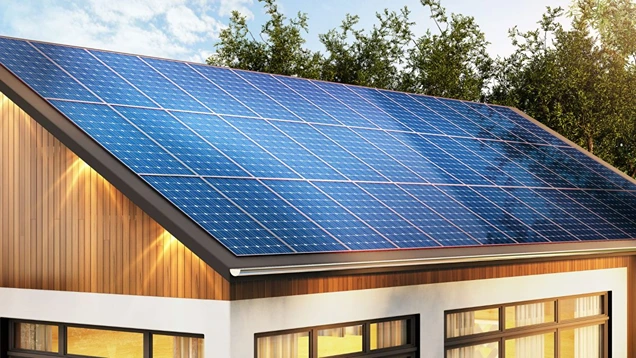Schools, strata schemes, and business organisations in Brisbane and across South East Queensland are considering the adoption of solar power as a strategic investment.
As electricity costs increase and environmental awareness grows, solar power is a viable choice for minimising running costs and carbon emissions.
Bright Spark Group, a well-known electrical engineering and energy solutions company, has experience in providing customised solar systems and installations that suit the specific requirements of solar for schools, strata schemes, and businesses.
Why Commercial Solar Brisbane Makes Sense
Financial Benefits
Solar energy systems can result in huge savings in electricity bills. For schools and businesses, which consume most of their energy output throughout the day, solar energy gives them a chance to gain credits for part of their power usage.
Not only do they end up saving money, but they also gain an insurance against potential hikes in the cost of energy in the future.
Environmental Impact
Moving to solar power eliminates carbon emissions by a significant amount. An example is the Brisbane City Council investment in solar energy that has lowered more than 4,000 tonnes of carbon dioxide each year, equivalent to taking about 1,300 cars off the roads.
It shows the real environmental dividends one achieves when embracing solar energy.
Educational Opportunities
For schools, solar installations are learning equipment for studying sustainability and renewable energy. Initiatives such as the Solar Car Challenge in Western Australia are experiential learning on the part of the students and creates enthusiasm for the STEM subjects and for protecting the environment.
How Solar Power Systems Work for Commercial Properties
Solar photovoltaic (PV) systems harness energy from sunlight and convert it to electricity via solar panels on rooftops or open areas. Solar panels produce direct current (DC) electricity, which is converted to alternating current (AC) through inverters for building consumption.
Excess energy can be supplied back into the grid or stored in a battery to be used at a later time. sustainablewave.com
Major components of a commercial solar system include:
Solar Panels: Utilise sunlight and convert it to electricity.energy.gov.au
Inverters: Both DC electricity and AC electricity are converted.inverters: Converts DC electricity into AC electricity.
Mounting Systems: Fix panels to the roof or ground mounts.sustainablewave.com
Monitoring Systems: Monitor energy production as well as system performance.bccsolar.com
Batteries (Optional): Excess energy is stored to be utilised in cloudy days or high-demand periods.
Understanding ROI and Payback Periods
Solar investment has long-term financial advantages. Payback period and return on investment (ROI) vary with system size, energy usage, and incentives available.
System Size: The larger the system, the more electricity is generated and hence the more savings.
Energy Consumption: The more daylight energy consumed by a property, the more solar installations benefit them.
Incentives: Government incentives and rebates could easily cut down initial costs.
On average, Queensland commercial solar systems pay back between 3 to 6 years, and after that, the electricity produced is essentially zero cost, which is equal to huge savings in the lifetime of the system.
Government Incentives for Solar Installations
The Australian government provides several incentives to support the use of solar power:
Small-scale Renewable Energy Scheme (SRES): Issues Small-scale Technology Certificates (STCs) that can be traded for monetary incentives, offsetting up-front solar installation costs.
Queensland Business Energy Saving and Transformation (QBEST) Rebates: Offers rebates to small businesses and medium-sized firms for the installation of energy-saving equipment, including solar systems.
Interest-Free Loans: Various states offer interest-free loans to eligible homes and businesses to install solar, ensuring it is cheaper to transition to renewable energy.
The incentives target decreasing the cost of utilising solar energy, enhancing the efficiency and sustainability in the use of energy across different industries.
Bright Spark’s Commercial Expertise
Bright Spark Group is a business that specialises in designing and supplying customised solar solutions for South East Queensland schools, strata complexes, and commercial buildings. Our licensed, trained, and Clean Energy Council-approved technicians guarantee every project is of quality and compliance standard.
Range of Services
We provide full-cycle services that include:
Site Assessment and Feasibility Studies: Establishing whether your property is suitable for solar installation.
System Engineering and Design: Designing custom solar solutions that address your unique energy requirements.
Installation and Commissioning: Facilitating hassle-free integration with current systems.
Maintenance and Monitoring: Offering ongoing support to optimise system performance.
Commitment to Quality
Our attention to quality and customer service has meant that we have built a reputation as a reputable solar solution provider. We take a close relationship with customers to understand their unique needs and supply systems that are an investment for the future.
Case Studies
Chrysalis School, New South Wales
With their current power supply constraints, Chrysalis School entered into an agreement with Enesol to deploy a 10-kilowatt solar system supported by a 10-kilowatt-hour battery and a smart energy management system. The solution also saved them from the cost of upgrading the grid connection at an estimated $120,000, offering considerable savings and greater energy reliability.
Catholic Education Diocese of Parramatta
Nineteen Diocesan schools have installed more than 4,000 solar panels that produce around 2.9 million kilowatt-hours of power every year. The project is set to cut carbon emissions by 2,442 tonnes per year and lower up to $1.1 million worth of power and maintenance expenses every year.
Brisbane City Council
The Council has fitted over 3.4 megawatts of solar panels in different locations, reducing over 4,000 tonnes of carbon dioxide every year. This is in line with the target of the Council to be net-zero by 2050.


